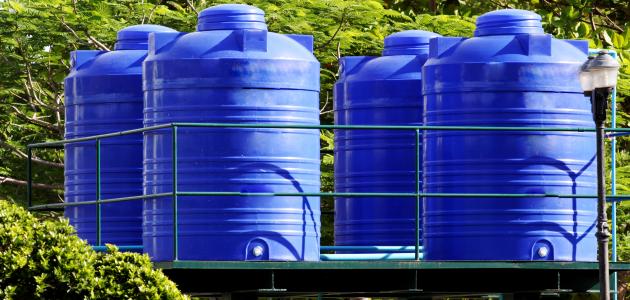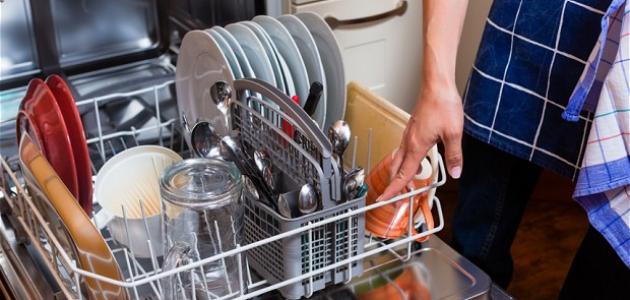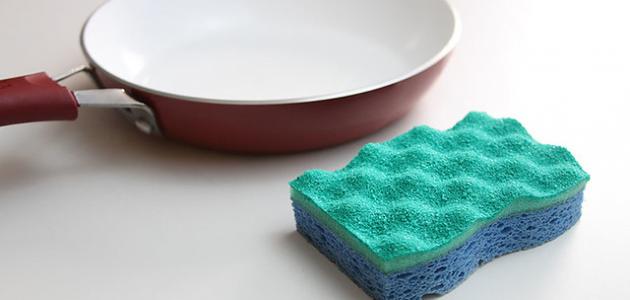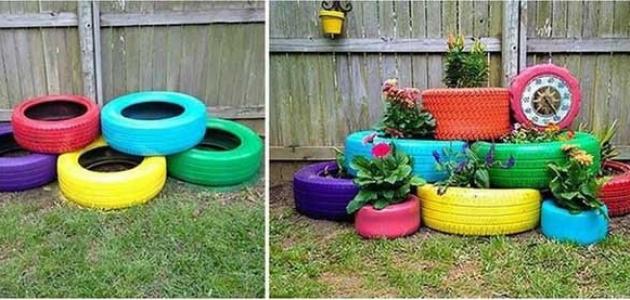water reservoirs
Water tanks are considered among the basics found in any home, and are used for domestic purposes such as cooking, drinking, washing, bathing, etc. They are also used for various commercial purposes. It should be noted that over time, sediments, algae, and crusts accumulate on these tanks, and they become unusable, and need sterilization and purification. To come back in better shape.
Water tank parts
Tanks that are used to store water are characterized by the presence of some important parts to maintain public and professional safety, and these parts are the following:
- Inlet and outlet: The inlet and outlet allow water to enter and exit the tank for daily uses, and it must be noted that they must be placed in the correct place, so that the inlet is at the highest location to store the largest amount of water possible, and the outlet is at the bottom of the tank to use the maximum amount of water. In addition to that, it must The outlet is 4 to 6 inches higher than the bottom, to circulate the water at the bottom of the tank.
- Overflow tube: It is located at the inlet level in the upper part of the tank, and air gases must be preserved to avoid the tank exploding due to strong pressure on it.
- Drainage location: It is located at the bottom of the tank to remove remaining sediments while cleaning the tank.
- Vent tube: It is located in the upper part of the tank to release air, and the opening must be down so that nothing enters the tank.
- Level indicator: indicates the amount of water stored inside the tank and the amount of pressure inside it.
- Sink: It is located at the base of the tank to drain water.
- Inspection room: It is an opening in the upper part of the tank that has a cover and can be locked. It is there to inspect and maintain the tank and ensure the cleanliness of the water inside it.
How do I clean the water tank?
Water tanks must be cleaned in order to be used safely, and there are many methods used for cleaning, including the following:
Read also:How to narrow wide shoes- Clean and sterilize the tank at least once a year; To remove algae and bacteria that may be present in tanks.
- Empty the tank of water before cleaning it.
- Rub the easy-to-clean inner walls with a clean cloth and remove dirt from it, then rinse the tank.
- Mix a tablespoon of bleach solution for every gallon of household water, pay attention to the damage that may occur from the chlorine inside the bleach, and rub the interior walls with this mixture with a clean, dry cloth, and leave it for two hours. After the time has elapsed, you must wash the tank well with clean water, and then fill it. With drinking water, it must be noted that it is necessary to limit the water resulting from the mixture so as not to cause harm from it.
- Cleaning tanks that cannot be accessed by ensuring that the tank is full of water, then adding the appropriate amount of household bleach according to the amount in the tank, mixing the bleach with water if possible, closing the tank tap and leaving it for 12 hours, after the time has elapsed Drain the tank and refill it with drinking water, making sure that the water delivered to the tank is safe to drink and that it is obtained from a reliable and approved source.
- Open the tap of the tank, empty it of water, connect it to a hose, and direct the water to a specific place so that a flood of water does not occur. It should be noted that water tanks may contain a washing valve, so it must be used to drain the water instead of draining it through the tap.
- Scoop the water from the bottom of the tank using a bucket, and then remove the remaining water using a vacuum cleaner or using towels to absorb any remaining water.
- Scrub the tank from the inside using a stiff hair brush or a clean, dry piece of sponge, moving horizontally from side to side while pressing on the brush or sponge, or using a long-handled brush to reach the bottom of the tank safely and moving up and down vertically.
- Avoid using steel-bristled brushes or sponges made of steel, as they may scratch the plastic.
- Using an electric washing machine to clean the tank. It can be used alone or in combination with cleaning the inner part of the tank, depending on how difficult it is to remove sediments and residues. The washing machine is used by filling the washing machine with water or a cleaning solution, and placing it at the distance that works best to remove sediments and dirt, and so that the water collides with it. On the inner wall of the tank, making sure to wear safety glasses and follow all other safety regulations when using them.
- Spray the walls with baking soda and scrub them with a brush or a clean, dry sponge, then scrub all the corners and rinse the tank well with water, clean the pipes and hoses well with cleaning solutions, and then refill the tank with contaminated water.
Types of water tanks
There are many types and shapes of water tanks, and they are chosen based on the need for any of them, including the following:
Read also:How do I remove the smell of fish from the house?- Fiberglass tanks: These tanks can hold from 50 gallons to 50.000 gallons, and are used for underground applications.
- Polyethylene tanks: These tanks are above ground.
- Polypropylene tanks: These tanks are considered one of the most common tanks and are economical for above-ground storage. In addition, their size ranges from 12 gallons to 15.000 gallons. These tanks are durable, lightweight, and long-lasting.
- In-ground polyethylene tanks: These tanks are denser, lighter in weight, come in many sizes, and provide smoother integration.
- Wooden tanks: These tanks are used to store rainwater above the ground. They were previously made of redwood, but nowadays they are made of pine, cedar, or cypress, wrapped with steel cables, and lined with a plastic lining. In addition, these tanks can hold from 700 to 37.000 gallons. There are specialized tanks with a capacity of up to 1.5 million gallons.
- Metal tanks: These tanks are considered lightweight and easy to transport, and most of these tanks consist of galvanized steel covered with hot zinc to resist corrosion.
- Concrete tanks: These tanks can be built above or below the ground, and the size and spacing of the reinforcement must be determined to match the structural loads of the cast-in-place concrete tank, especially underground tanks. To avoid cracking or water leakage, as for potable systems, the tank is plastered from the inside with high-quality materials approved for drinking purposes.
- Standard or typical storage tanks: These tanks are an underground room and are a series of plastic units wrapped in a waterproof lining. In addition, their pipes can be connected to a higher module to facilitate cleaning and inspection.









